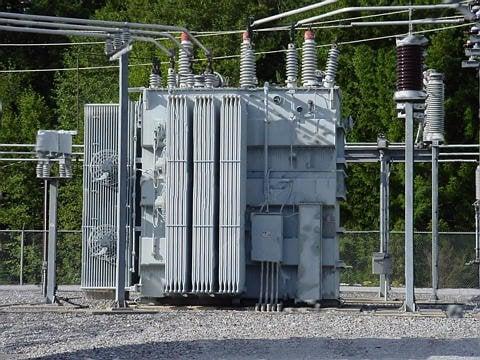Report on the Global Step Up and Step Down Transformer Market and its Contribution to Sustainable Development Goals (SDGs)
Executive Summary
The global market for Step Up and Step Down Transformers is experiencing robust growth, fundamentally driven by the global energy transition and the pursuit of the United Nations Sustainable Development Goals (SDGs). These transformers are critical components in electrical infrastructure, facilitating the efficient transmission and distribution of electricity. Their role is increasingly vital in modernizing power grids, integrating renewable energy sources, and expanding energy access, directly supporting key SDGs, including SDG 7 (Affordable and Clean Energy), SDG 9 (Industry, Innovation, and Infrastructure), and SDG 13 (Climate Action). This report analyzes the market dynamics, regional trends, and technological advancements through the lens of sustainable development.
Market Drivers and Alignment with Sustainable Development Goals
Expanding Energy Access and Supporting SDG 7
The rising global demand for electricity, particularly in developing nations, is a primary market driver. This expansion is crucial for achieving SDG 7, which aims to ensure universal access to affordable, reliable, and modern energy. Transformers are indispensable for extending and stabilizing national grids, bringing power to underserved communities and fostering economic development.
Infrastructure Modernization and Contribution to SDG 9
Significant investments in infrastructure, especially in emerging economies, are fueling demand for transformers. This aligns with SDG 9, which focuses on building resilient infrastructure, promoting inclusive and sustainable industrialization, and fostering innovation. Key activities include:
- The development of smart grids, which require advanced transformers for efficient voltage regulation and management of variable energy inputs.
- Large-scale power generation and transmission projects designed to enhance grid reliability and capacity.
Transition to Renewables and Advancing SDG 13
The global shift towards renewable energy sources such as solar and wind is a major catalyst for the transformer market. This transition is a cornerstone of SDG 13 (Climate Action). Step-up transformers are essential for increasing the voltage from renewable generation sites for efficient long-distance transmission to consumption centers, thereby enabling the large-scale integration of clean energy into the power system.
Market Segmentation Analysis
Segmentation by Rating
The market is segmented by power rating to meet diverse application needs, from residential to utility-scale projects, ensuring appropriate infrastructure for all levels of development.
- Small Transformers: Used for low-capacity applications, including residential buildings.
- Medium Transformers: Deployed in commercial and industrial settings.
- Large Transformers: Essential for utility-scale power generation and transmission.
Segmentation by Cooling Type
The oil-cooled transformer segment is projected to see significant growth. Innovations in this area, such as the development of biodegradable and less flammable transformer oils, contribute to SDG 12 (Responsible Consumption and Production) by reducing environmental risks.
Regional Analysis and SDG Implementation
East Asia and South Asia: Leading the Energy Transition
East Asia and South Asia are dominant markets, driven by rapid industrialization and substantial government investments in energy infrastructure. Nations like China, India, and Indonesia are heavily investing in renewable energy and smart grid technologies to meet the targets of SDG 7 and SDG 9. Numerous power projects scheduled for completion are set to bolster regional demand for efficient transformers.
Middle East and Africa (MEA): Building Sustainable Infrastructure
The MEA region is witnessing a surge in transformer demand due to massive infrastructure development projects. Investments from international partners, particularly in sub-Saharan Africa, are focused on upgrading transmission networks to improve electricity access (SDG 7) and support economic growth (SDG 8). These developments are critical for building the resilient infrastructure envisioned in SDG 9.
Market Challenges and Sustainable Solutions
High Initial Investment and Complexity
The high cost and technical complexity associated with transformer installation can be a barrier. Addressing this requires capacity building and investment in skilled labor, aligning with SDG 8 (Decent Work and Economic Growth) by creating specialized jobs in the energy sector.
Regulatory and Environmental Concerns
Stricter environmental regulations on transformer materials and disposal present a challenge but also drive innovation. The development of eco-friendly transformer oil alternatives and more energy-efficient designs directly supports SDG 12 and SDG 13 by minimizing environmental impact and improving resource efficiency.
Opportunities for Sustainable Growth
Technological Advancements for Efficiency
Ongoing innovation in transformer design offers significant opportunities. The development of transformers with higher energy efficiency and the use of sustainable materials can reduce energy losses during transmission, contributing directly to SDG 7 and SDG 13.
Investment in Renewable Energy Integration
The continued global expansion of renewable energy presents a vast opportunity. Advanced transformers are required to manage the intermittency of solar and wind power, ensuring grid stability and facilitating a deeper penetration of clean energy in line with global climate goals.
Key Industry Players and Sustainable Initiatives
Leading companies in the market are actively contributing to sustainable development through innovation and strategic initiatives. Recent developments highlight this trend:
- ABB: Has developed a more energy-efficient transformer line specifically to support the integration of renewable energy.
- Siemens: Has introduced a range of environmentally friendly transformers using non-toxic oils, addressing environmental concerns and promoting sustainability.
- General Electric
- Schneider Electric
- CG Power and Industrial Solution Limited
- Hammond Power Solutions Inc.
- Mitsubishi Electric Power Products Inc.
- SPX Transformer Solutions Inc.
- Eaton
- WEG
Analysis of Sustainable Development Goals in the Article
1. Which SDGs are addressed or connected to the issues highlighted in the article?
The article on the Step Up and Step Down Transformer market discusses several issues that are directly and indirectly connected to the following Sustainable Development Goals (SDGs):
- SDG 7: Affordable and Clean Energy: The core theme of the article is the infrastructure required for electricity transmission and distribution, the shift to renewable energy, and electrification in developing countries.
- SDG 9: Industry, Innovation and Infrastructure: The text emphasizes the modernization of power grids, large-scale infrastructure projects, industrialization, and technological innovations in transformer design.
- SDG 11: Sustainable Cities and Communities: The article touches upon providing reliable electricity for domestic use in the context of urbanization and infrastructural development.
- SDG 12: Responsible Consumption and Production: It mentions environmental concerns related to transformer oil and the development of eco-friendly alternatives, pointing towards sustainable management of industrial materials.
- SDG 13: Climate Action: The focus on integrating renewable energy sources into power grids is a key strategy for climate change mitigation, which is central to this goal.
2. What specific targets under those SDGs can be identified based on the article’s content?
Based on the information provided, the following specific SDG targets can be identified:
- Target 7.1: By 2030, ensure universal access to affordable, reliable and modern energy services.
- Explanation: The article highlights the “growing electrification in developing countries” and the role of transformers in ensuring “stable electricity access” for “domestic and industrial use.”
- Target 7.2: By 2030, increase substantially the share of renewable energy in the global energy mix.
- Explanation: The text repeatedly mentions the “global shift towards renewable energy sources” and “significant investments in renewable energy” (such as wind and solar) as key market drivers.
- Target 7.a: By 2030, enhance international cooperation to facilitate access to clean energy research and technology… and promote investment in energy infrastructure and clean energy technology.
- Explanation: The article notes that African nations “are receiving investments from China and other countries to upgrade their transmission networks.”
- Target 9.1: Develop quality, reliable, sustainable and resilient infrastructure… to support economic development and human well-being.
- Explanation: The article discusses the importance of “modernizing their power grids,” “enhancing their electrification infrastructure,” and executing “large-scale infrastructure projects” in emerging economies like China, India, and Indonesia.
- Target 9.4: By 2030, upgrade infrastructure and retrofit industries to make them sustainable, with increased resource-use efficiency and greater adoption of clean and environmentally sound technologies.
- Explanation: The text points to the “adoption of smart grids,” “innovations in transformer design,” and the development of “more energy-efficient transformer line[s]” as key trends.
- Target 11.1: By 2030, ensure access for all to adequate, safe and affordable housing and basic services.
- Explanation: The function of step-down transformers to “lower voltage to safer levels before it enters homes and businesses” directly relates to providing a safe and essential basic service (electricity) to residential areas.
- Target 12.4: By 2020, achieve the environmentally sound management of chemicals and all wastes throughout their life cycle… to minimize their adverse impacts on human health and the environment.
- Explanation: The article addresses “environmental regulations regarding the use of transformer oil” and highlights the development of “non-toxic transformer oils” and “eco-friendly alternatives” as a response.
3. Are there any indicators mentioned or implied in the article that can be used to measure progress towards the identified targets?
The article implies several indicators that can be used to measure progress:
- For Target 7.1: The rate of electrification in developing regions. The article mentions “growing electrification in developing countries” and projects in sub-Saharan Africa and South Asia as evidence of progress.
- For Target 7.2: The level of investment in renewable energy and its integration into the grid. The text refers to “significant investments in renewable energy” and the need for transformers to handle “variable renewable energy inputs.”
- For Target 9.1: Investment in and completion of power infrastructure projects. The article points to “numerous power generation and transmission projects slated for completion by 2025” in Indonesia and “massive infrastructural developments” in the Middle East.
- For Target 9.4: The adoption rate of advanced and sustainable technologies. The article mentions the “adoption of smart grids” and the market growth of “energy-efficient” and “environmentally friendly” transformers.
- For Target 12.4: The market development and use of environmentally sound materials. The article highlights “innovations” such as “transformer oil alternatives” and “non-toxic transformer oils” developed by companies like Siemens.
4. Table of SDGs, Targets, and Indicators
| SDGs, Targets and Indicators | ||||||||||||||||||
|---|---|---|---|---|---|---|---|---|---|---|---|---|---|---|---|---|---|---|
|
Source: openpr.com







